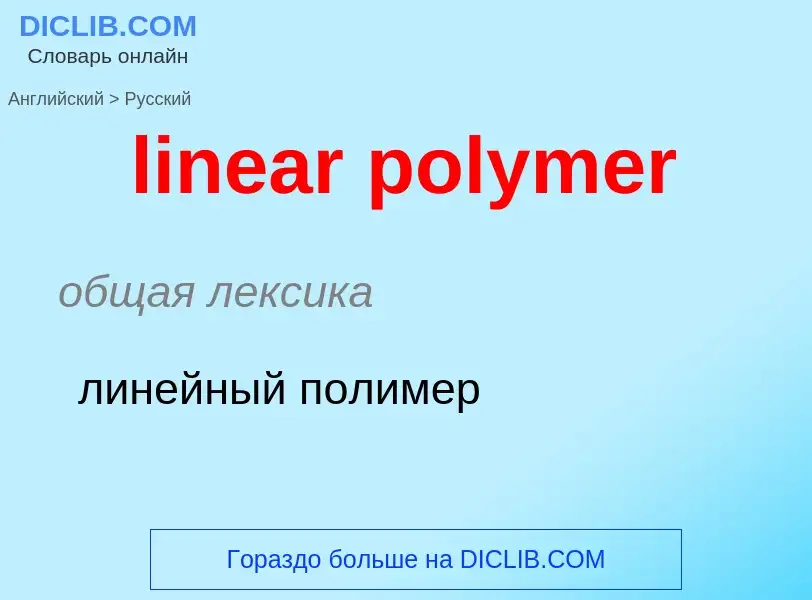Vertaling en analyse van woorden door kunstmatige intelligentie ChatGPT
Op deze pagina kunt u een gedetailleerde analyse krijgen van een woord of zin, geproduceerd met behulp van de beste kunstmatige intelligentietechnologie tot nu toe:
- hoe het woord wordt gebruikt
- gebruiksfrequentie
- het wordt vaker gebruikt in mondelinge of schriftelijke toespraken
- opties voor woordvertaling
- Gebruiksvoorbeelden (meerdere zinnen met vertaling)
- etymologie
linear polymer - vertaling naar russisch
общая лексика
линейный полимер
общая лексика
гомополимеризация
Definitie
Wikipedia

A polymer (; Greek poly-, "many" + -mer, "part") is a substance or material consisting of very large molecules called macromolecules, composed of many repeating subunits. Due to their broad spectrum of properties, both synthetic and natural polymers play essential and ubiquitous roles in everyday life. Polymers range from familiar synthetic plastics such as polystyrene to natural biopolymers such as DNA and proteins that are fundamental to biological structure and function. Polymers, both natural and synthetic, are created via polymerization of many small molecules, known as monomers. Their consequently large molecular mass, relative to small molecule compounds, produces unique physical properties including toughness, high elasticity, viscoelasticity, and a tendency to form amorphous and semicrystalline structures rather than crystals.
The term "polymer" derives from the Greek word πολύς (polus, meaning "many, much") and μέρος (meros, meaning "part"). The term was coined in 1833 by Jöns Jacob Berzelius, though with a definition distinct from the modern IUPAC definition. The modern concept of polymers as covalently bonded macromolecular structures was proposed in 1920 by Hermann Staudinger, who spent the next decade finding experimental evidence for this hypothesis.
Polymers are studied in the fields of polymer science (which includes polymer chemistry and polymer physics), biophysics and materials science and engineering. Historically, products arising from the linkage of repeating units by covalent chemical bonds have been the primary focus of polymer science. An emerging important area now focuses on supramolecular polymers formed by non-covalent links. Polyisoprene of latex rubber is an example of a natural polymer, and the polystyrene of styrofoam is an example of a synthetic polymer. In biological contexts, essentially all biological macromolecules—i.e., proteins (polyamides), nucleic acids (polynucleotides), and polysaccharides—are purely polymeric, or are composed in large part of polymeric components.




![Microstructure of part of a DNA [[double helix]] biopolymer Microstructure of part of a DNA [[double helix]] biopolymer](https://commons.wikimedia.org/wiki/Special:FilePath/DNA animation.gif?width=200)






![necked]] under tension necked]] under tension](https://commons.wikimedia.org/wiki/Special:FilePath/Stable neck MDPE.jpg?width=200)
![Structure of a [[styrene-butadiene]] chain, from a molecular simulation Structure of a [[styrene-butadiene]] chain, from a molecular simulation](https://commons.wikimedia.org/wiki/Special:FilePath/Styrene-butadiene chain2.png?width=200)


